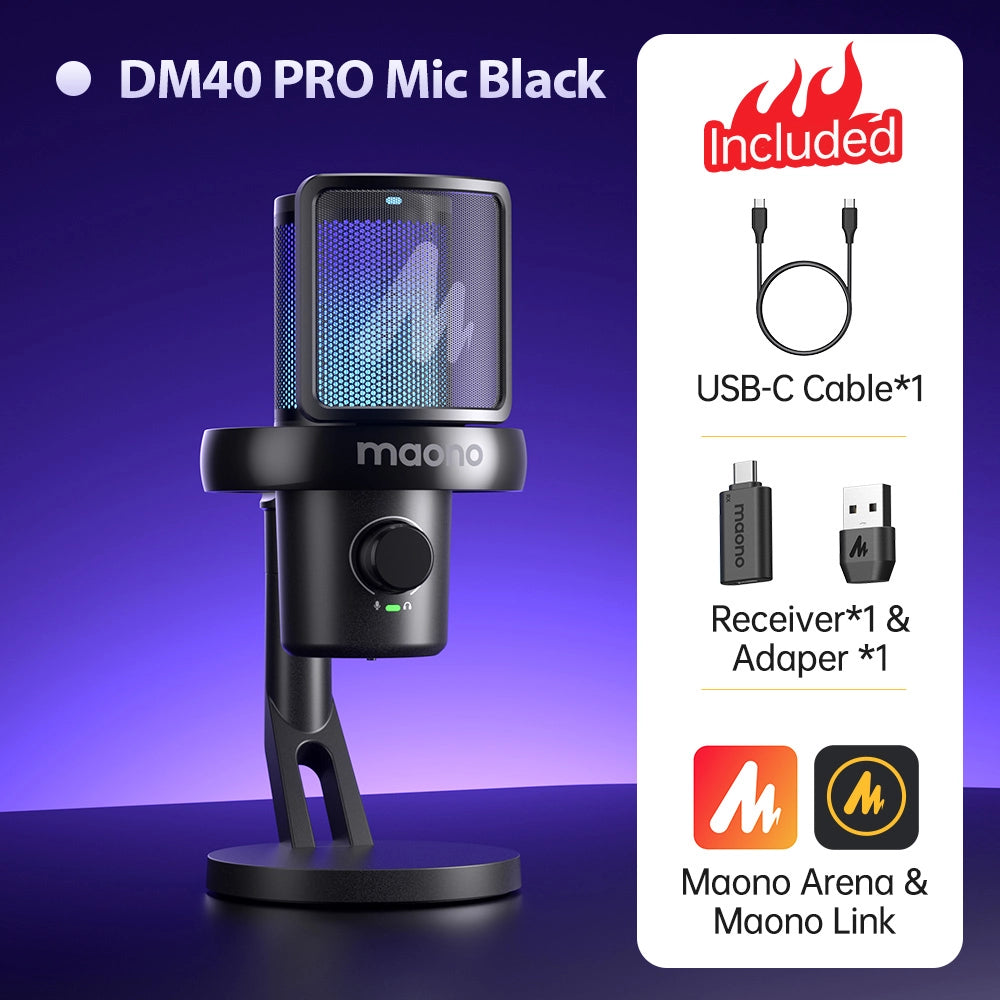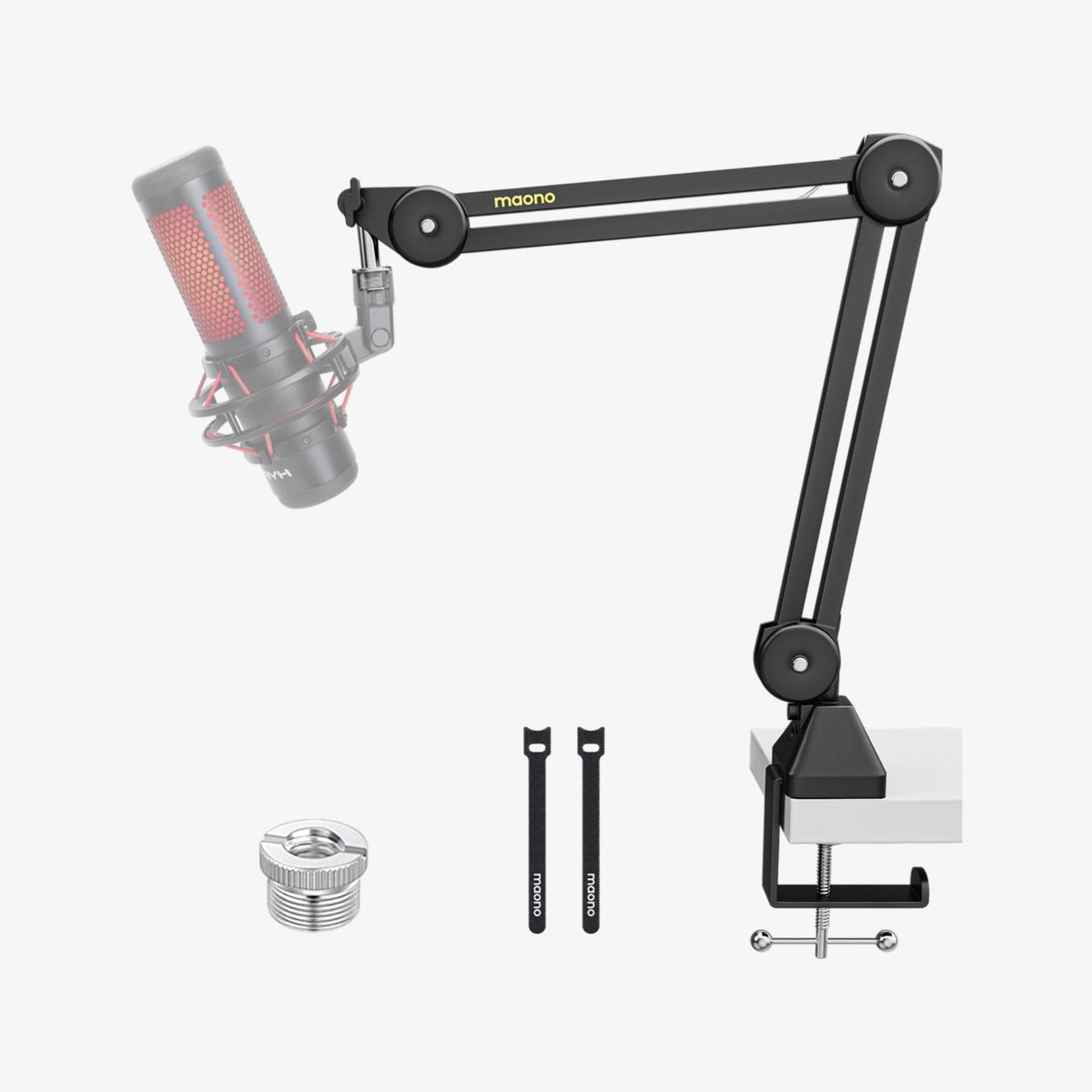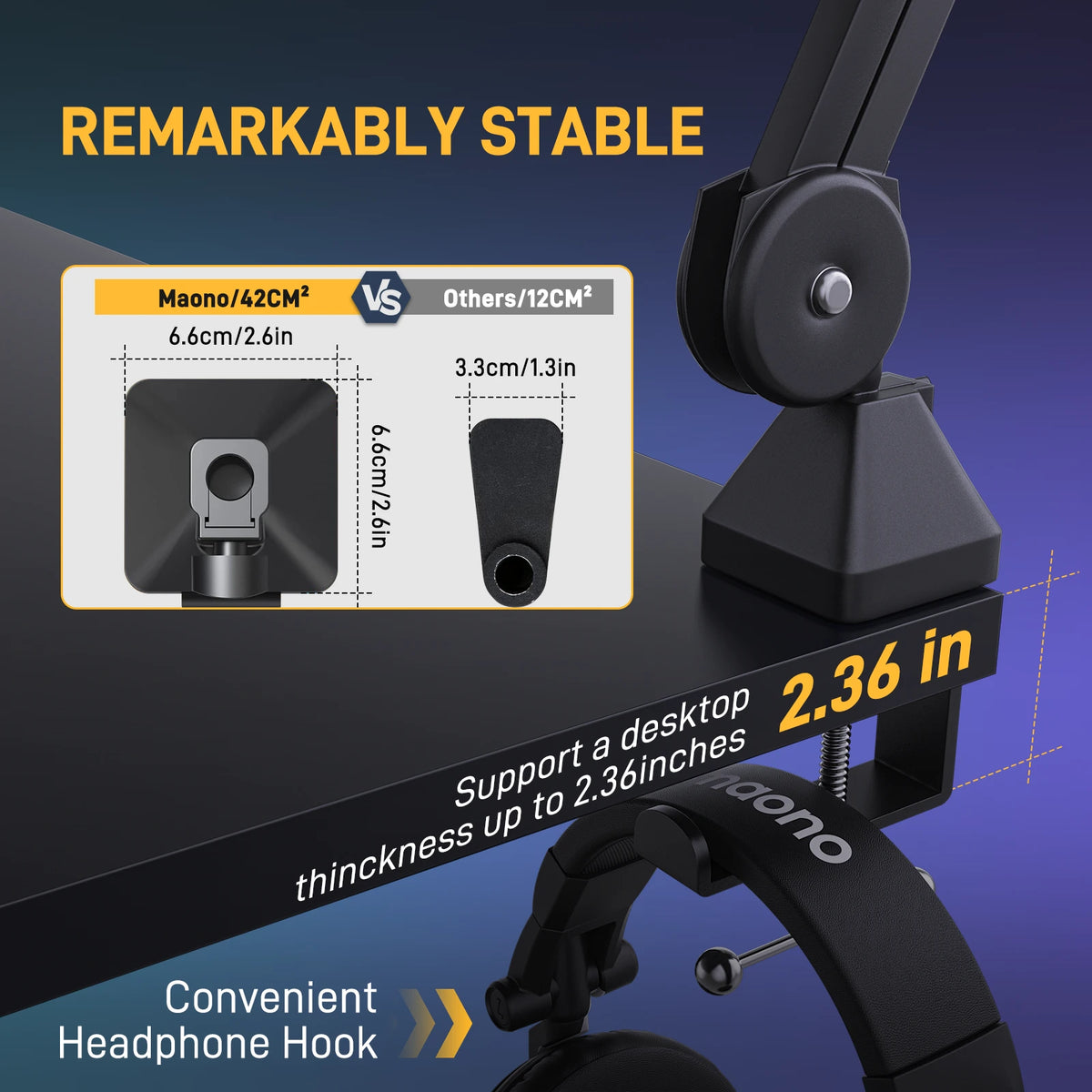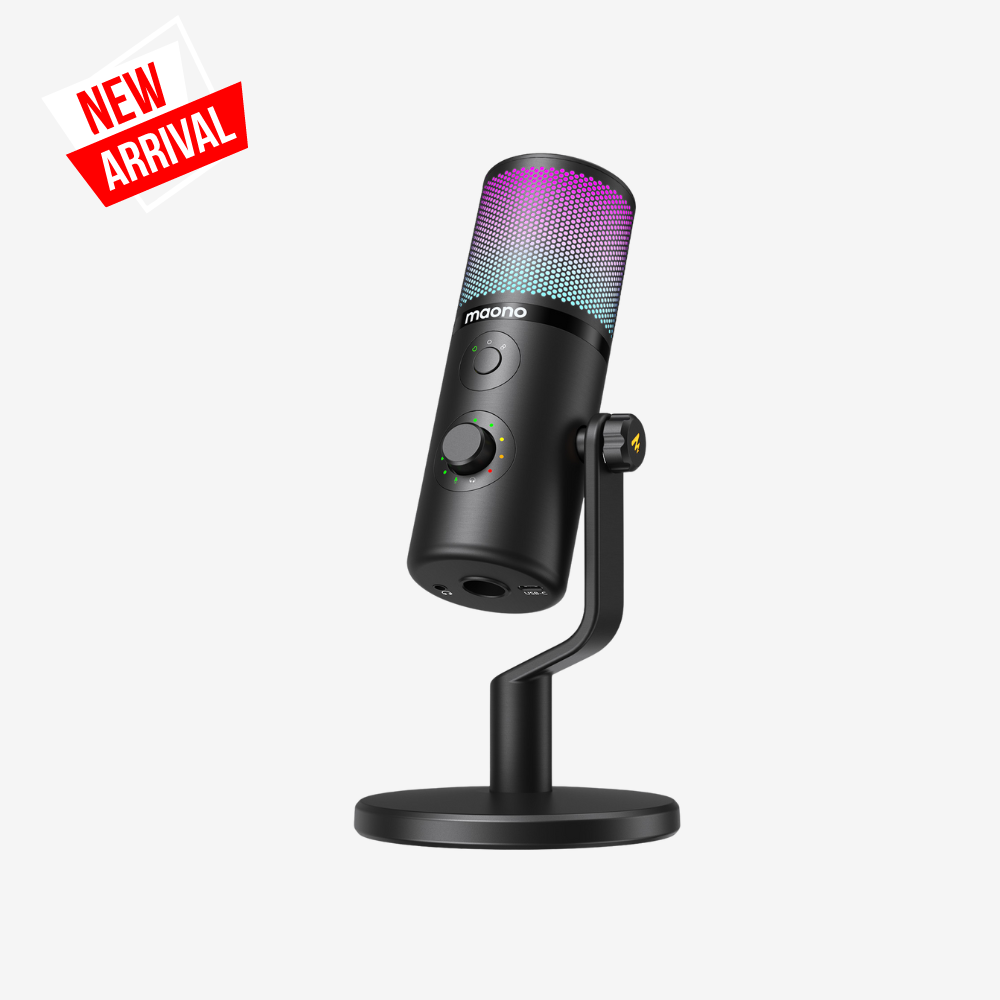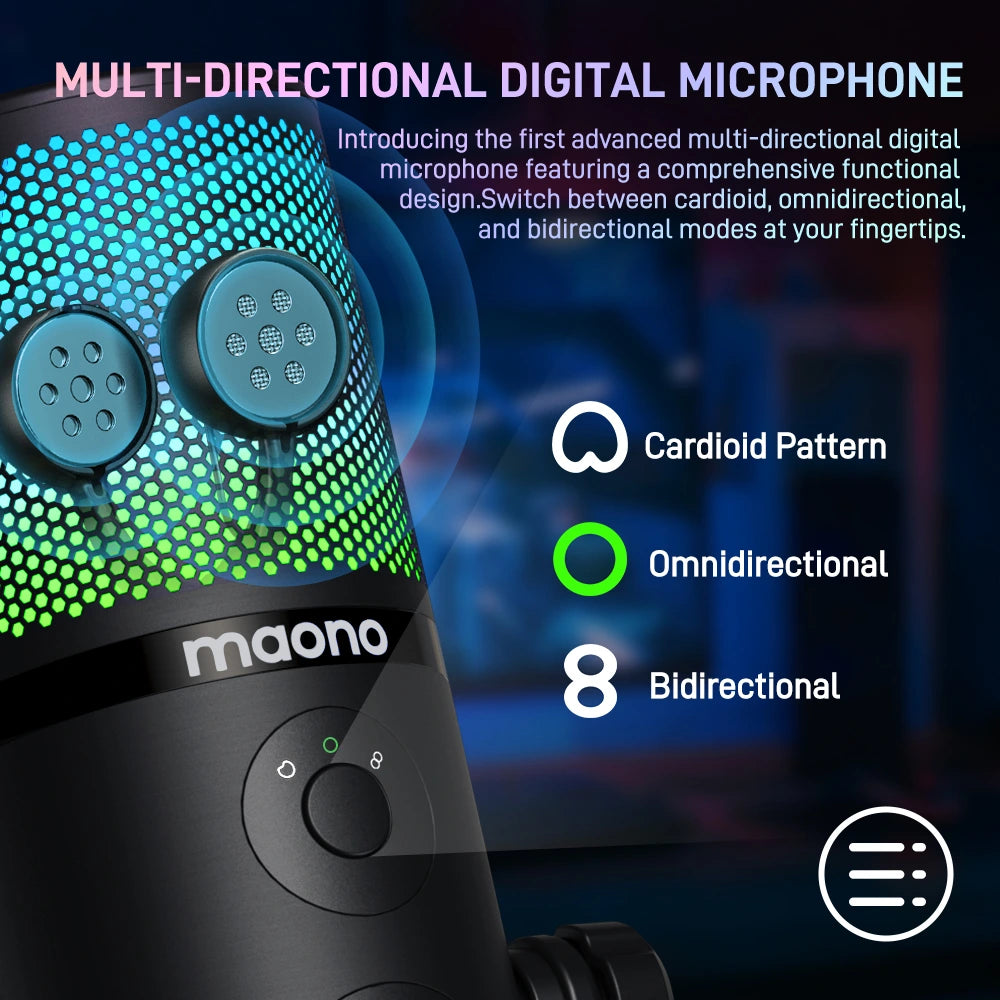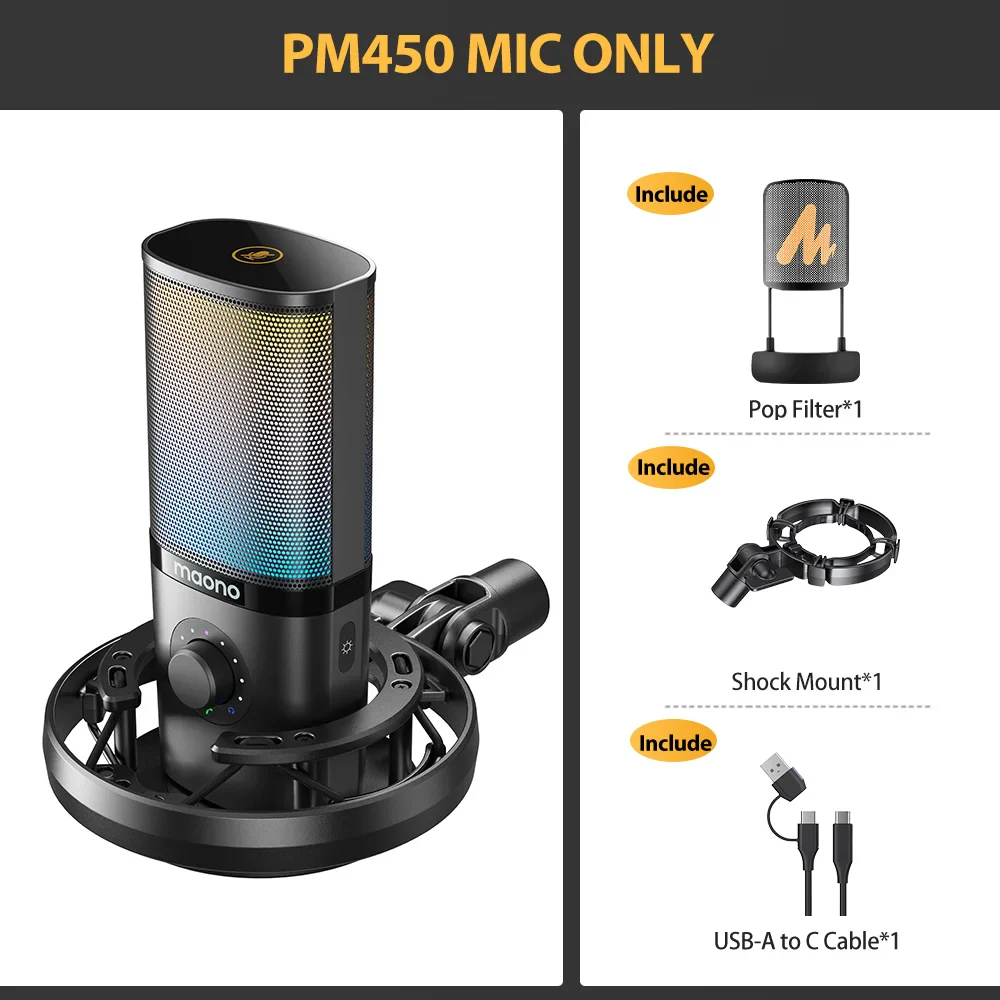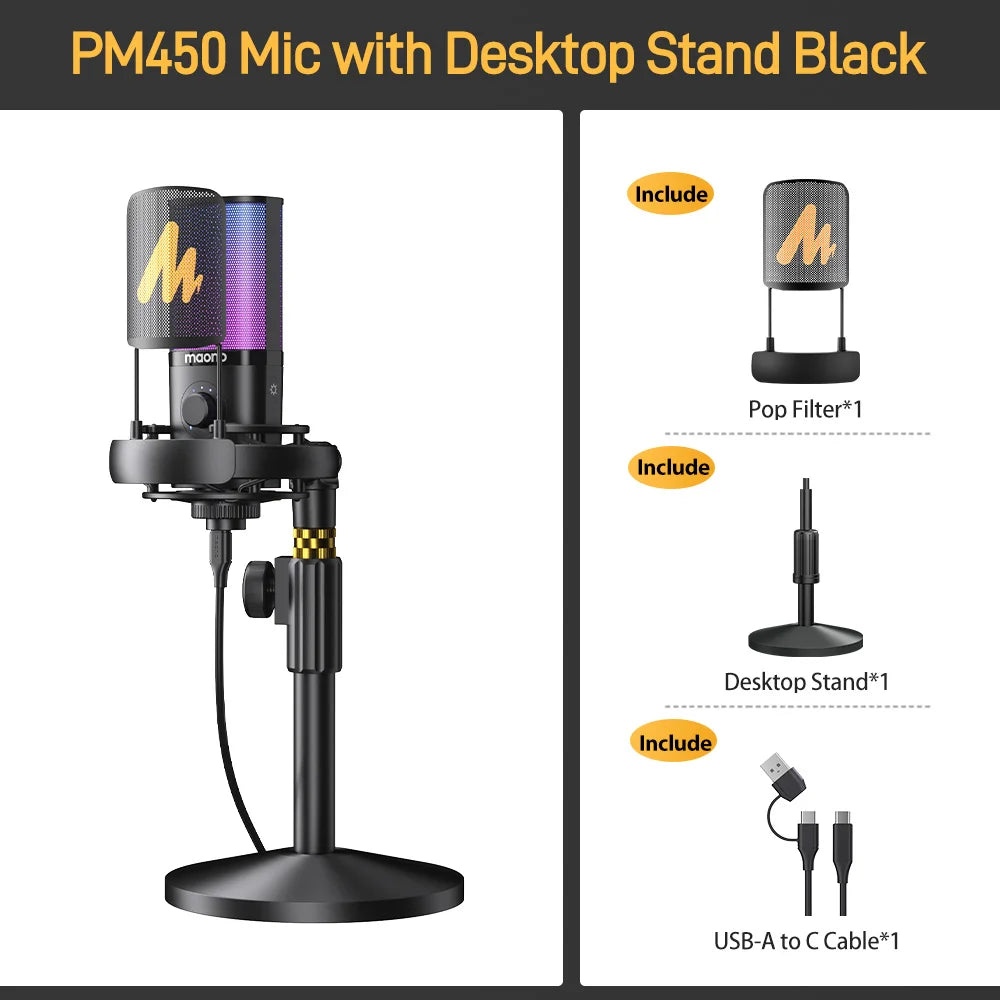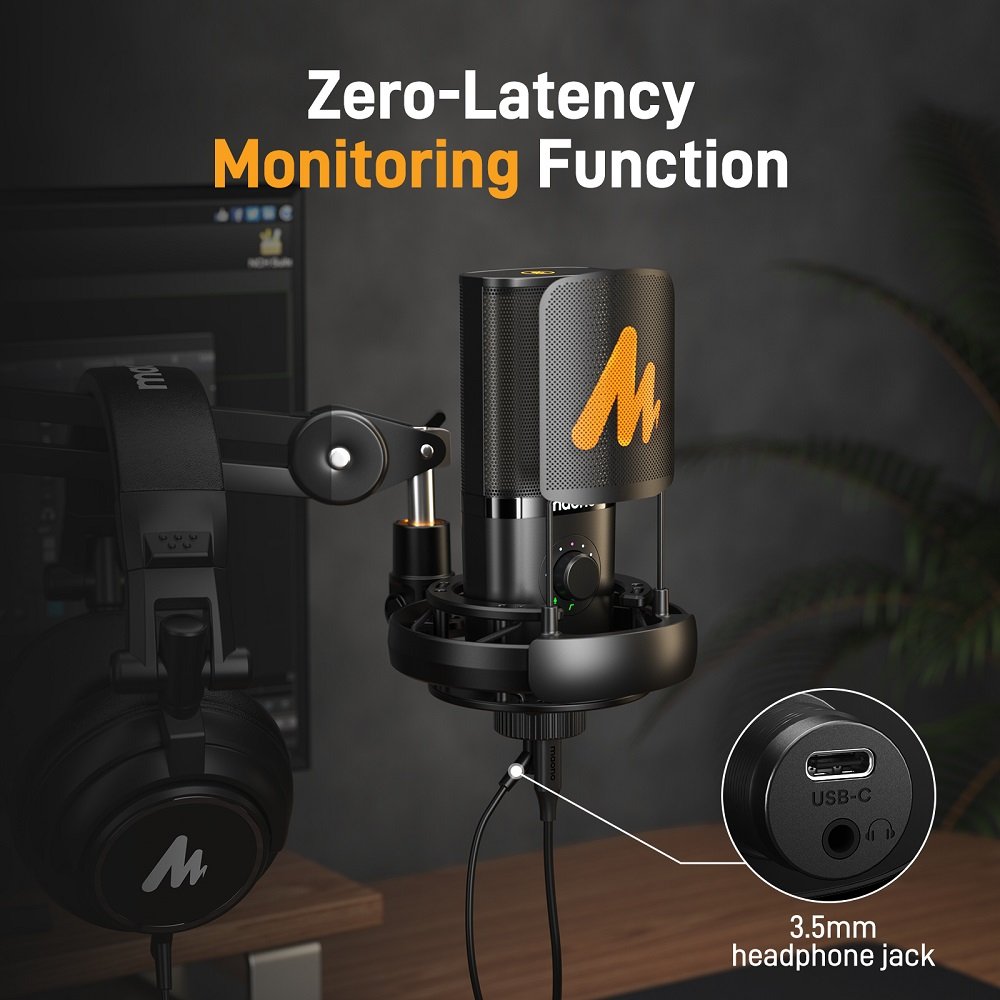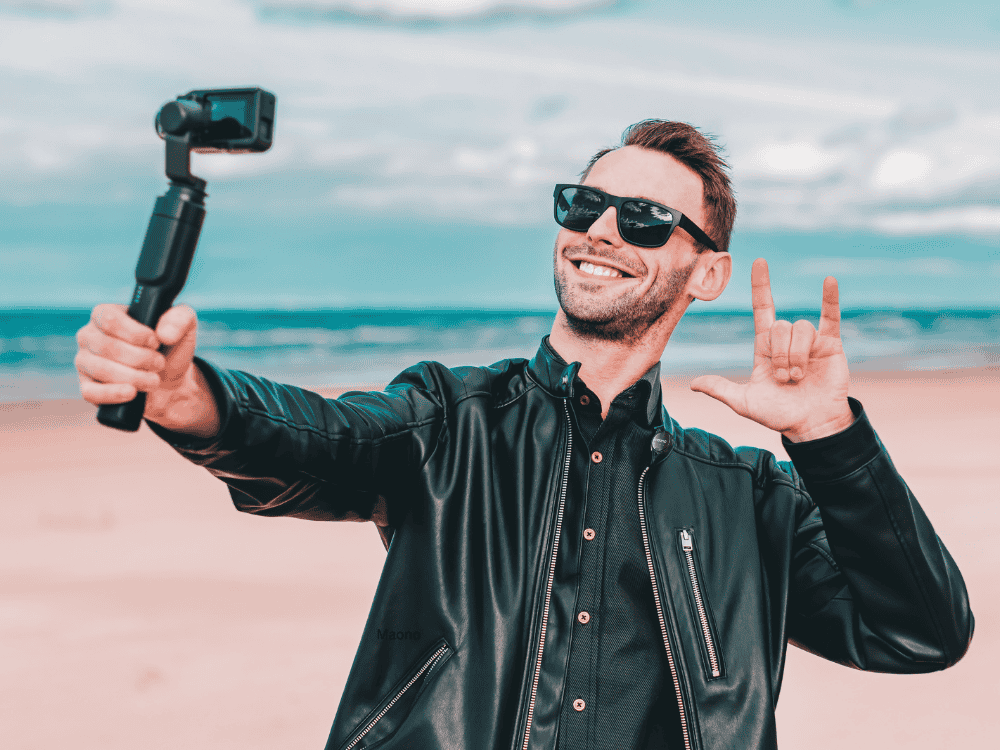A lavalier microphone, also known as lav microphone or a lapel mic, clip-on mic, or neck mic, is a miniature microphone typically worn by a performer or interviewer. It allows the speaker to move freely during the performance without interfering with audio pickup, unlike a directional overhead microphone that must be kept aligned and close to the source.
Wireless Lavalier microphones are commonly used by sports anchors, news reporters, conference presenters, churches and more. While a Lavalier microphone for computer can make a great option for podcasting on the go or creating YouTube videos as well.”
Link: https://www.maono.com/collections/wireless-microphone-system.
This article will discuss what a lavalier microphone is, how it works, and how to choose the right lav mic for you

What Is A Lavalier Microphone?
A Lavalier microphone, is a small, hands-free microphone clipped to clothing, often used in interviews, presentations, and broadcasts.
Lavalier microphones are very small microphones that can be attached directly to the actor's body or clothing. They come in both wired and wireless types and are designed to be self-contained and lightweight. A wired lav may restrict the actor's movement, but a wireless lav mic requires only a small transmitter package that is usually clipped to the actor's belt or placed in their pocket.
A wireless lavalier microphone transmits its audio feed via RF directly to a receiver that the mixer can control and adjust. There are lavalier microphones on the market of varying quality, but the best choice will produce audio comparable to that of a standard boom microphone.
How Do Lavalier Microphones Work?
Lavalier microphones work with various devices like computers, cameras, and smartphones, offering hands-free, high-quality audio. They can connect via wired or wireless options. For example, when using a lav mic with a computer, it provides clear sound for podcasts, video conferences, or recordings. In filmmaking, lavaliers ensure crisp, discreet audio capture. They're also great for content creators, such as YouTubers, enabling clear dialogue without bulky microphones. These mics are commonly used in professional interviews, presentations, and fitness instruction. Their versatility makes them ideal for any situation requiring mobility and clear sound.
Benefits of Using Lavalier Microphones
1. Hands-Free Operation
Lavalier microphones allow performers, interviewers, and speakers to use their hands freely, making them ideal for presentations, interviews, and performances.
2. Discreet and Unobtrusive
Their small size and ability to be clipped onto clothing make them less noticeable, providing a clean and professional appearance on camera.
3. Mobility
Users can move around freely without worrying about being tethered to a stationary microphone, enhancing the natural flow of movement and interaction.
4. Consistent Audio Quality
Being close to the speaker’s mouth, lavalier microphones capture consistent audio levels regardless of the speaker's movement, ensuring clear and reliable sound.
5. Versatility
Suitable for a wide range of applications, including theater, television, public speaking, and field recording.
6. Minimal Setup
Easy to set up and use, making them a practical choice for both professionals and beginners.
7. Reduced Handling Noise
Unlike handheld microphones, lavalier mics are less prone to picking up handling noise, resulting in cleaner audio recordings.
By incorporating these benefits, lavalier microphones enhance both the convenience and quality of audio recording in various settings.
How a Lavalier Microphone Works with a Computer
A lavalier microphone, also known as a lapel mic, connects to a computer via a 3.5mm TRRS jack, USB, or wireless transmitter. For USB-C or Lightning devices, adapters may be necessary. Once connected, the computer recognizes the mic as an external audio input device.
Connection Methods:
- 3.5mm TRRS Jack: Plug directly into the computer’s headphone/mic combo jack or use an adapter for split audio.
- USB Interface: USB lavalier mics plug directly into a USB port or through an audio interface.
- Wireless Systems: Wireless lavaliers like Maono WM620 and WM820 use transmitters paired with a receiver plugged into the computer via USB or an audio jack.
Benefits of Lavalier Microphones for Computer Use
- Hands-Free Operation: Unlike traditional desktop or handheld mics, lavaliers clip onto clothing, allowing unrestricted movement.
- Discreet Design: Their small size makes them less obtrusive during video calls or presentations.
- Consistent Audio Quality: The proximity to the speaker’s mouth ensures even audio capture, reducing background noise.
- Portable and Lightweight: Easy to transport and set up, making them ideal for on-the-go professionals or content creators.
Why Lav Microphones Are Essential for Video Creators
Lav microphones are essential for video creators because they provide high-quality, close-range audio capture while remaining discreet and easy to use. Their compact size allows them to be clipped onto clothing, keeping the focus on the subject without bulky equipment in the frame. Lav mics excel in capturing clear, consistent sound even in dynamic filming scenarios, such as interviews, vlogs, or live events. They’re ideal for creators seeking professional-grade audio to match their visuals, enhancing the overall production quality and viewer experience.
Cons: Disadvantages of Using Lavalier Microphones:
Lavalier microphones can pick up unwanted background noise due to their omnidirectional pickup pattern and may require careful placement to avoid rustling sounds from clothing. Additionally, their small size makes them more prone to damage and loss compared to larger, more robust microphones.
How to Use a Lavalier Microphone?
Most good quality lav microphones have a clip that attaches to the microphone lead.
Depending on the clothing being worn, you can.
- If there is a collar, you can clip the microphone to the edge of the collar and usually, you will align the microphone capsule to your sternum (in other words, facing inward). Facing down is fine, as it will reduce the possibility of bursting sounds.
- If there is no collar to clip the mic to, you can always hold a bit of fabric with two fingers and clip the mic to it.
How to Choose the Best Lav Microphone for Your Needs
There's no right or wrong way of determining the perfect lavalier microphone suitable for you. You just need to follow these steps:
Step 1. Determine Your Needs
Identify the primary use (e.g., interviews, presentations, performances). Consider whether you need a wired or wireless microphone based on mobility requirements.
Step 2. Learn about the Various Microphone Types
Decide between omnidirectional (captures sound from all directions) or unidirectional (captures sound from one direction) based on your recording environment.
Step 3. Check the Connectivity
Ensure compatibility with your recording device (e.g., smartphone, camera, audio recorder) and check for necessary adapters or connectors.
Step 4. Test for Sound Quality
Look for microphones with a good frequency response and low handling noise to ensure clear audio.
Step 5. Determine Your Budget
Consider your budget and balance between cost and features. Some high-end models offer superior sound quality and durability.
Step 6. Choose a Durable, Sturdy Build Quality
Choose a microphone with a robust build to withstand wear and tear, especially if used frequently or in various environments.
Step 7. Take note of Additional Features
Look for features like wind protection, pop filters, and easy mounting options to enhance performance and convenience.
By considering these factors, you can select a lavalier microphone that best suits your specific needs and ensures high-quality audio recording.
Popular Lavalier Microphones
Here are some popular lavalier microphones you might consider:
1. Rode SmartLav+: Known for its high-quality audio and compatibility with smartphones.
2. Sennheiser ME 2-II: Offers excellent sound quality and is commonly used in professional settings.
3. Audio-Technica ATR3350xiS: A budget-friendly option that provides good audio quality for its price.
With vast combined experience & excellent abilities in electrical engineering, industrial design, software engineering, we design and manufacture the best quality audio products in house, sell directly to end-users
-
2s auto pairing, plug and play
-
Ultra-compact wireless audio
-
2.4GHz digital transmission, crystal-clear audio at up to 164ft, optimized for extremely stable operation in dense RF environments
-
Built-in Omni mics and external lavalier microphone, meet the needs of different scenarios
-
Fine mic adjustment for easier audio post-editing
-
Professional audio chip for clear and natural sound
5. Maono WM820 B2 Wireless Lavalier Microphone - Perfect for iPhone users
Sometimes we need the freedom of cable-free recording, but that doesn't mean we need to sacrifice audio quality. Maono WM820 B2 wireless microphones allow us to record incredible audio without limitations when you're on stage, on set, or in the field.
The Maono Wireless Microphone is an ultra-compact and extremely versatile wireless microphone system consisting of a receiver and transmitters. Maono WM820 B2 has passed Apple MFi certification. It offers the best performance and maximum compatibility on Apple iOS devices.
More Frequently Asked Questions (FAQs):
What's the difference between Maono wireless and another brand wireless microphones?
Maono wireless microphones are described as follows:
The Maono has passed this certification with strong R&D and manufacturing strength.
No pop-ups; real plug and play, no damage to your devices. Don't worry about not working after iOS system update
Maono WM820 B2 wireless mics use a high-class professional audio chip providing intelligent noise reduction. The S/N(SIGNAL-NOISE RATIO) is 82dB(82db S/N Ratio). which is suitable for capturing every audio detail.
What are the Types of Lavalier Microphones?
Lavalier microphones come in various types to suit different needs and applications:
- Wired Lavalier Microphones: These are connected directly to the recording device via a cable, offering reliable audio quality without worrying about battery life.
- Wireless Lavalier Microphones: These provide more freedom of movement as they transmit audio wirelessly to the recording device. They are ideal for presentations and on-the-go recordings.
- USB Lavalier Microphones: These are designed to connect directly to a computer via USB, making them perfect for podcasting, streaming, and online meetings.
What is a Lavalier microphone used for?
A Lavalier microphone is used for hands-free audio recording, making it ideal for interviews, presentations, video productions, and live events. It clips onto clothing, allowing for discreet and portable use while capturing clear sound.
How do lav microphones compare to shotgun microphones?
Lav microphones are compact, wearable, and ideal for capturing clear audio from a single speaker, making them perfect for interviews and presentations. In contrast, shotgun microphones are highly directional and excel at picking up sound from a distance while minimizing background noise, making them better suited for film production and outdoor shoots. The choice depends on your recording needs and environment.
What is the best lavalier microphone for computers
The best lavalier microphones we recommend are these two excellent options which are both compatible with computer:
- Maono WM620: A wireless system with a stable 2.4GHz connection, ensuring clear audio without dropouts. It includes a USB-C receiver for seamless computer connectivity.
- Maono WM820: Compact and versatile, this model offers dual transmitters, making it ideal for dual-person setups like interviews or podcasts. It supports USB and audio jack connections.
Why use a lavalier microphone for computer setups?
- Convenience: Lavalier mics free up desk space, providing a clean and professional setup.
- Mobility: Ideal for presentations, webinars, and video content creation, lavaliers allow users to move freely without sacrificing sound quality.
Superior Sound Isolation: Designed to capture speech directly from the source, minimizing background noise, making them ideal for noisy environments or shared workspaces.
How to use a lavalier microphone with a computer?
To use a lavalier microphone with a computer, plug the mic's 3.5mm jack or USB connector into your computer’s microphone input or USB port. For wireless models, connect the receiver to your computer via USB or audio input. After connection, select the mic as your input device in your computer’s audio settings.
What’s the difference between wired and wireless lavalier microphones?
Wired lavalier microphones connect directly to your device via a cable, providing reliable audio without interference. Wireless lavalier microphones use Bluetooth or RF signals to transmit audio, offering more freedom of movement but requiring battery power and potentially more setup.
Lavalier or lav microphones are invaluable tools for anyone looking to capture high-quality audio with convenience and versatility. Whether you're a content creator, presenter, or filmmaker, their compact design and hands-free functionality make them ideal for a variety of applications. By understanding their features, uses, and benefits, you can choose the right lavalier microphone for your computer to elevate your audio production. Explore your options now at Maono.com, and let a lav mic help you achieve professional-grade sound for your next project.
Also Read:
Wireless Microphone Guide: Best Lavalier Mics for DSLR & Vlogging
Best DSLR Microphones: Top Lavalier Mics for Your Camera
A Guide to Wireless Lavalier Microphones: Top Picks, Features & FAQs
Best Lavalier Microphones for Recording, Vlogging, and Streaming










